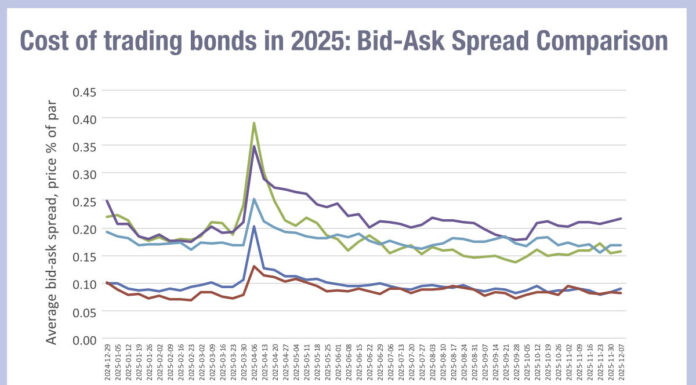The European Securities and Markets Authority (ESMA) has published its regulatory technical standards (RTS) for EMIR 3, after market participants expressed frustration that the finalised rules are arriving so close to the wire.
The RTS apply to article 7a of EMIR 3, which requires counterparties to open an active account in a EU central counterparty (CCP) and clear a representative portion of interest rate derivative trades through that account.
At IDX in London, Julia Kolbe, head of capital markets policy and UK at Deutsche Bank, predicted that, “there will be a vast difference between what ESMA consulted on and what will be included in the final text. We knew that ESMA would adapt its approach due to feedback from the consultation, but it has made it very difficult to know how to prepare.”
“Asking for forbearance from the FIA and other industry bodies is an important way to put a foot in the sand and call out this rulemaking approach, which creates uncertainty and increases implementation costs,” she continued.
Those in scope of the EMIR clearing obligation – with a monthly exposure of up to €3 billion in interest rate swaps and of €1 billion in credit default swaps – will be impacted by the change.
“Clients tell us the new rules are confusing, as there’s a lot going on,” Angus McDiarmid, head of European interest rate derivatives at Tradeweb, told The DESK earlier this year.
Jenn Keser, head of market structure and regulation at Tradeweb, expressed concern for smaller firms under this requirement.
“I have the most sympathy with clients who have to open an account and prove that they can use it at any moment in time, but might not necessarily use it because they don’t trigger that €6 billion threshold of clearing,” she said.
In the final RTS, published 19 June, ESMA stated that during the consultation “several respondents warned that the active account requirement should not result in financial institutions being forced to execute additional or unnecessary transactions.”
The majority of market participants expressed concerns around increased operational and cost burdens and a lack of consistency with Europe’s attempts to simplify regulation. In response, ESMA states that it has streamlined operational conditions and stress-testing, with particular focus on areas of concern raised during the consultation: the reporting of activities and risk exposures requirements, representativeness obligations, and the fulfillment of operational conditions.
A number of consultation respondents stated that operational capacity requirements outlined in condition (a) by ESMA were already met by a firm’s CCP onboarding, arguing that additional compliance requirements would add further operational burdens. The authority responded that no responses from market participants rendered the proposal inoperable, but added that further scrutiny should be applied to the definition of sufficient financial resources for cash and collateral accounts.
On activities and risk exposure reporting, ESMA initially proposed that firms provide gross and net notional amounts cleared for each subcategory and class of derivatives to both European and third-party CCPs as part of the representativeness obligation. Consultation respondents argued that this could be overly burdensome – only two supported the approach. As such, reporting requirements have been reduced here,
Only the gross notional amount outstanding of the aggregate month-end average position for the previous 12 months in the relevant derivatives contracts cleared by the group across all CCPs will be reported at the aggregate level.
However, the authority expressed uncertainty as to how this rule change will play out, stating that this depth of information may not be enough for national competent authorities to determine whether counterparties are eligible for exemptions, and is not a complete reflection of a position’s risk level.
©Markets Media Europe 2025












